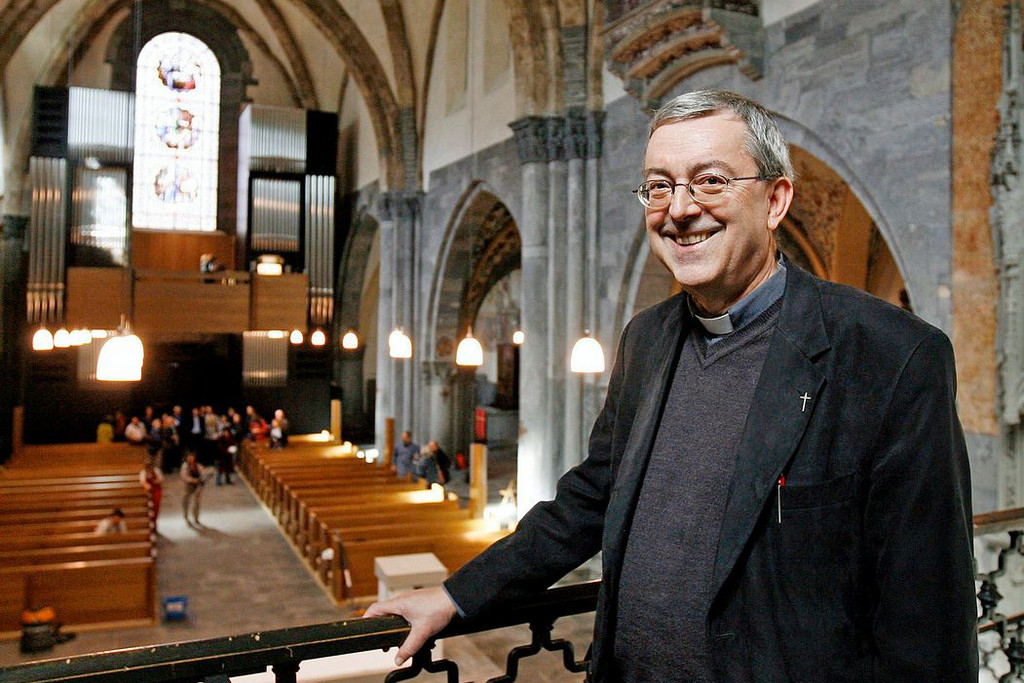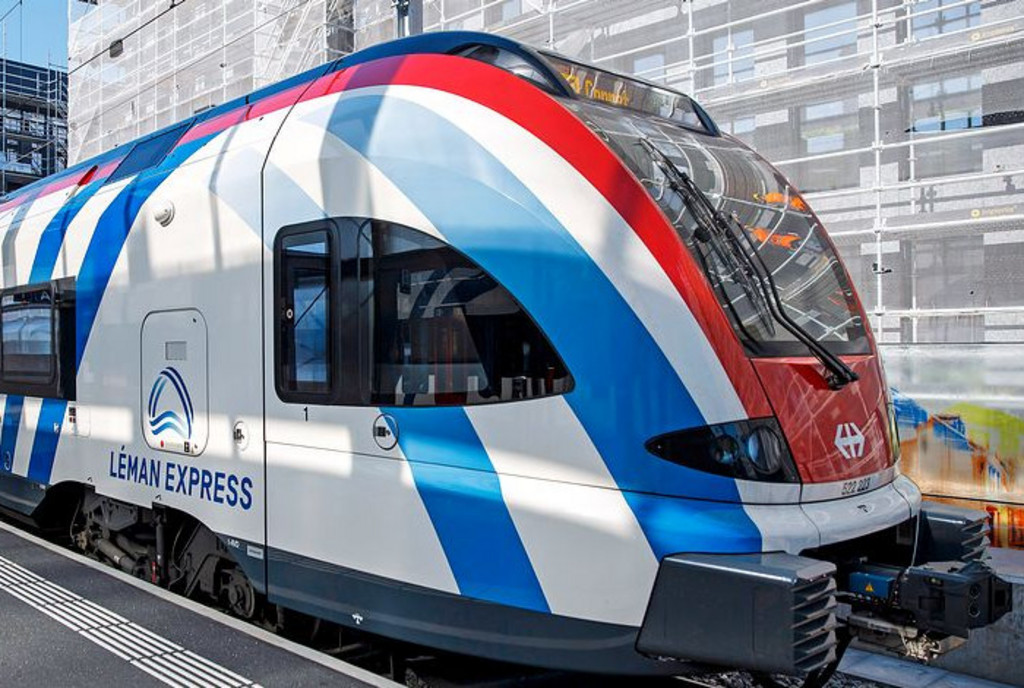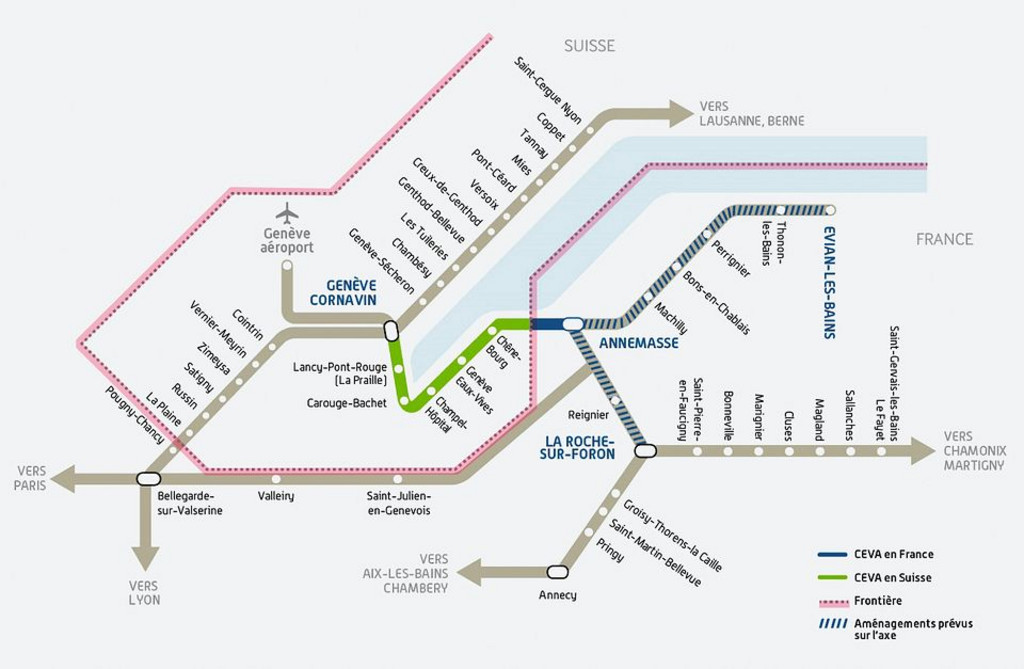Geneva is an international city, which generates a large number of jobs but remains intrinsically closed off, paying little attention to its surrounding French and Vaudois hinterland. This inward-looking attitude peaked in 2014 when, encouraged by the populist MCG (Geneva citizens’movement), the people of Geneva refused to participate in financing carparks located in the French outskirts. This, despite the new areas being intended to relieve the city of some of its motorised traffic. Records currently indicate that 630,000 vehicles cross the border each day.
The entry into service of the Léman Express, planned for 15 December, will put an end to the city’s split personality. With its Regional Express Network (Réseau Express Regional or RER in French), Geneva will be connected to the rest of the one-million-person agglomeration. The city’s inhabitants will be able to go shopping in neighbouring France in just 15 minutes. Frontier workers living in Haute-Savoie in France will be granted direct access to the city centre by taking the train from Annecy, Thonon or Saint-Gervais. The city will see the arrival of two new central stations, Lancy Pont Rouge and Eaux-Vives, each accompanied by a new neighbourhood complete with companies and public infrastructure. Three new stops will be introduced to the service.
The space saved must be protected
The aim of this huge operation, the cost of which amounts to 1.6 billion Swiss francs, is to reduce motorised traffic in the centre of a city where 42 % of inhabitants already do not own a car. The entry into service of the Léman Express should lead to a substantial 12 % reduction in traffic. Indeed, the 7 % decrease in traffic recorded each summer in Geneva already noticeably frees up the public space. But Geneva will have to accompany this movement with traffic restriction measures to prevent the newfound “emptiness” and improved traffic flow from being refilled by new vehicles, “as occurred following the launch of the RER in Zurich”, recalls Vincent Kaufmann, professor in mobility analysis at the Ecole Polytechnique Fédérale de Lausanne (EPFL). The canton will also have to meet inhabitants’ requests regarding pedestrian zones and “gentle mobility”.
Will authorities dare to restrict access to the city for cars? A new mobility law certainly looks to prioritise public transport in the city centre and in secondary urban centres. The text represents something of a compromise for Geneva, as the principle of complementarity between public and private transport is inscribed in its constitution. The canton is also under an obligation to offset any reductions in the quantity of parking space available. This system has provoked chaos in the city’s central areas, such as Cornavin and Place Bel Air.
Convincing commuters to leave their cars at home
Indeed, the struggle regarding car parking is another of the canton’s hot topics. At present, only 40–50 % of motorists actually pay for their parking space: certain commuters prefer to park illegally, with the risk of a 40 franc fine considered “cheap”. But the city is promising to clamp down on this. Free parking spaces for companies are also in its sights. These spaces could be converted into a source of revenue, for example, and made subject to taxing measures. In a city devoid of pedestrian zones, the arrival of the Léman Express should be accompanied by “several communal projects aiming to pedestrianise the streets and squares in the city centre, or to at least give pedestrians the priority”, says Yann Gerdil-Margueron, head of information and communication at the Cantonal transport office.
“It is a golden opportunity, because with a 15 % reduction in inner-city traffic, these developments will be painless,” reflects Vincent Kaufmann. For this mobility specialist, the political and social context is favourable to change. “The CVP has repositioned itself on these matters and this alters the political balance. And we mustn’t forget the Green Wave and climate concerns.” Historically, the question of mobility has always greatly divided left-wing and right-wing politics.
Geneva choses cars over trains
Geneva is emerging from a long period of confinement. Prior to 1914, the region boasted a rail network stretching 125 km between Switzerland and France. “It took a century to complete the CEVA rail project (Editor’s note: the train line linking Annemasse to Geneva), notably because of the two wars which led to the borders being closed off. After 1945, Geneva opted for cars,” explains Christian Democrat Guy Mettan. This former journalist rallied for the creation of the missing link between the two countries, provided for in an agreement signed in 1912. “It has been a long wait, but the project has been fulfilled relatively quickly, given its immense size,” comments the former president of Alprail, an association which supported the CEVA rail project.
Those who have visited the tunnels and the stations under construction have expressed surprise at the scale of the work. “The Lancy Pont-Rouge and Eaux-Vives stations have 320-metre-long platforms and a double track system. The stations are enormous. It’s just huge!” exclaims Kaufmann.
Weaknesses on the French side
“With no real territory, scaling up presented a psychological issue for the city canton. The RER will enable us to step out of the cantonal borders,” states Mettan. However, mobility specialists highlight weaknesses, which could derail the system. The Léman Express will be maintained by both Swiss and French mechanics on both Swiss and French trains, from Stadler and Alstom respectively. This combination of styles could prove problematic. Delays in the implementation of French park and ride systems could also curb commuters’ reliance on the train. Furthermore, the SNCF rail network is purportedly rundown and poorly adapted to the RER system. “There are parts with no double tracks and where switches are operated manually. If something were to go wrong, it could lead to delays across the whole network,” explains mobility specialist Kaufmann, citing the Basel RER as an unsuccessful example in which passengers must change trains to cross from one country to another.
A train every 10 minutes and 45 stations
The Léman Express will cover 230 kilometres and will provide services to 45 stations in France and Switzerland. It will operate with 40 trains. During the week, one train will leave every 10 minutes in both directions. Boasting six lines, this RER network expects 50,000 passengers per day and will link the key areas of the city and the canton: Cornavin train station, Cointrin airport and the cantonal hospital. It will also connect the two banks of the city. Travel outside the region will be possible on the network thanks to Regio Express trains: passengers will be able to reach Lausanne and Martigny from Eaux-Vives or Pont-Rouge, for example.













Comments